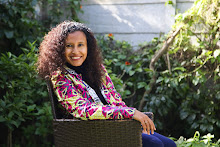Protesting "religion"

Extending the theme of the argument from freedom of press to how "salient" are religious sentiments...
Religion is often a very sensitive topic, you never know what will give rise to protests of hysterical magnitude, a simple painting by a senile barefoot artist down south, or an attempt to be funny by some Danes up north. It gets trickier when states have claims to democracy and multiculturalism - how much do you bend to accomodate the idiosyncracies of a religious group? A recent example are the changes made to the California history textbooks in the name of "true Hindusim".
In December last year, the Curriculum Commission, an advisory body to the California State Board of Education accepted most revisions proposed by Hindu Education Foundation (HEF) and Vedic Foundation (VF), two groups affiliated with militant Hindu nationalism in India. These moves are pretty consistent with the attempts of Hindutva groups toward rewriting history in India but what makes it scarier is the rate and ease with which the Hindutva ideology is being imbibed by the diaspora.
In 1998 when the BJP won at the centre in India, Hindu nationalist were inducted into the National Council for Education and Research Training (NCERT), the national curriculum development and review body, to make changes to school curricula. With the defeat of the BJP at the centre in 2004, processes to reverse these changes have been instated. But it seems to be picking up fervor here in the west.
How does Hindutva and India’s right wing politics fit into the diaspora framework? Here in the US, it has to reorient itself to the new context - find space amidst the multiculturalism instead of the ‘majority’ status it enjoyed back home. Also what works in India need not necessarily work with a group which is situated within an “imagined and real nation” & which usually takes refuge in the “apolitical conservatism of US bourgeois life” and is uninterested in most ideological matters. God this is sounding too pedantic - but I just read some stuff by Romila Thapar so am all intel at the moment!
The diaspora is a really interesting group to study, if you think about it, because they are constantly trying to negotiate their (often) conflicting identity at home and abroad. For the Indian Hindu I can well see how it becomes a search for a recognizable identity within the broad grouping of “Asian” (I am not so sure actually whether we even classify as that - that seems to be reserved for east asians??) and more importantly an identity separate from Islam. This search became frantic post 9/11 when there was a ‘racial scape-goating’ of the entire South Asian subgroup. It must have been so painful for the Indian Hindu with a ‘majority’ religious identity at home, to be clubbed together with Muslims - the intended targets of the US crusade against terrorism! (Didn't you hear of Sardars getting beaten up cos their joorhi was mistaken as a turban!)
As a sidenote, actually one of the good things about the "not so fanatically Hindu diaspora" is that there is at least some Indo Pak bonding. The bond seems to become more "language" than religion once we are so away form our countries. Ok, but i am digressing.
Where was I? Alright so in this version of history, Ram and Krishna are actual historical figures (rather than mythological ones), Aryans are the original inhabitants of India, the Golden Age of the Hindus is disrupted by the ‘barbaric Muslim invaders’. Amidst all this blind glorification even practices like casteism, superstitions and sati are rationalized as part of the culture. A glimpse into what was put in place in the curriculum of the BJP ruled states indicates the orientation of the proposed curriculum.
• Scientists consider plants as inanimate, while the Hindus consider them as animate and to have life (pg. 45, Sanskar Saurabh, pt. 4).
• Our original ancestors Manu and Shatrun gave life to this earth. (pg. 1, Akhil Bhartiya Sanskriti-Gyan Pariksha Prashnotri, ed. Vidya Bharti, for Class 8)
• Rama and Krishna took birth here to destroy evil and defend justice, religion and Sarasvati, and god took birth here many times to make this land pure (Class 4, Sarasvati Shishu Mandir)
• Man took birth in Tibet, originally a part of India. All beings were Arya beings. It is from there that they spread out into the field .(Pg. 67, Dharma Siksha, for class 6)
• Sati is a Rajput tradition that we should be proud of (ch. 28, Sanskar Saurabh, pt. 3, class 5).
Nah, i am not making all this up. Go ahead and check the cites if u want!


0 Comments:
Post a Comment
<< Home